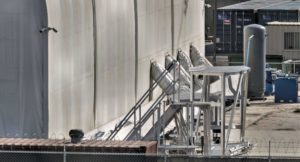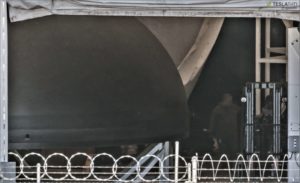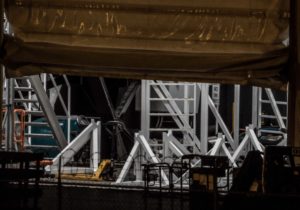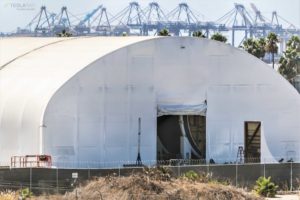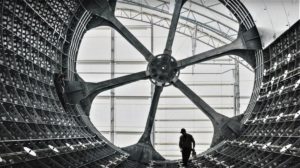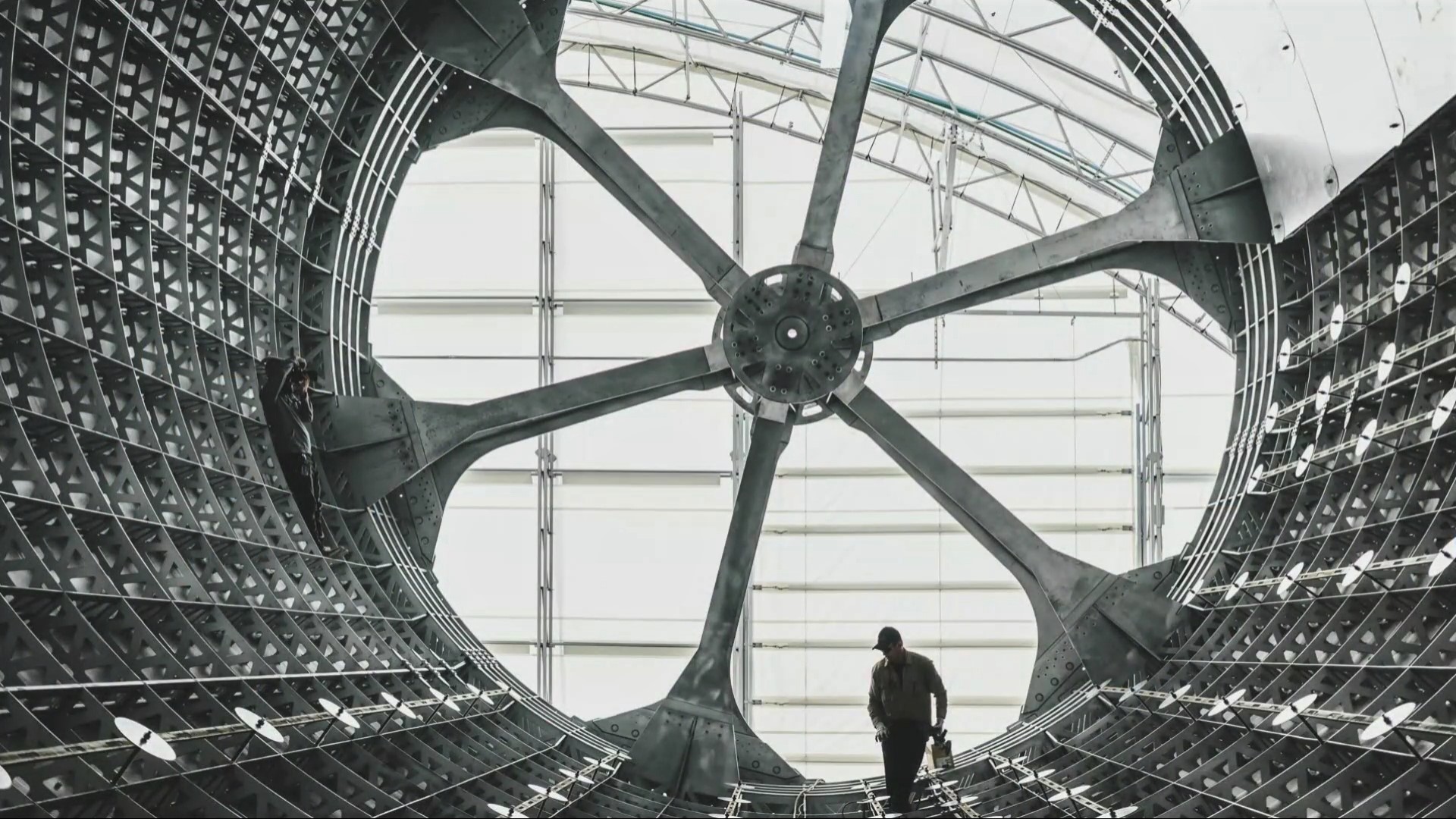
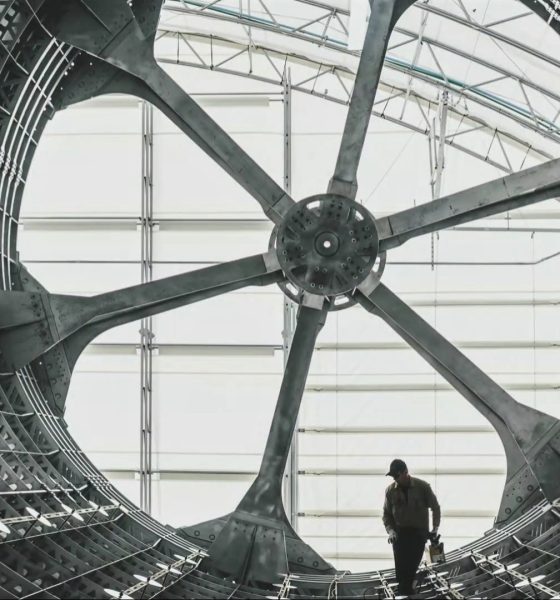
News
SpaceX CEO Elon Musk teases Mars breakthroughs as Starship design radically changes
During an interview with Axios, SpaceX CEO Elon Musk noted that he was “[really fired up about] a number of breakthroughs [SpaceX had recently made]” while being asked about his thoughts on the likelihood of him personally going to Mars (“70%”).
The minute-long teaser did not go much deeper but it certainly raises a number of questions (and hints at explanations) for a rapid-fire series of contradictory developments and changes to SpaceX’s BFR – since renamed to “Starship” and “Super Heavy” – per a series of tweets from Musk over the last two weeks.
In a typical Muskian fashion, when Axios interviewers asked, “What is the likelihood that you personally will go to Mars?”, the CEO responded with an exact percentage – 70% – without skipping a beat. Musk also fervently and rather eloquently refuted the popular and harebrained idea that any SpaceX-enabled Mars colony would simply become “an escape hatch for the rich”. If the rich wanted Mars or lunar bases as “escape hatches”, there are dozens of multibillionaires that could singlehandedly fund Musk’s estimated $2-10B price tag for the completion of the entire BFR development program while still retaining 50-90% of their net worth.
Musk’s retort is worth reading in full.
Mike Allen: “[Mars] could be an escape hatch for rich people.”
Elon Musk: “No! Your probability of dying on Mars is much higher than earth. Really the ad for going to Mars would be like Shackleton’s ad for going to the Antarctic. It’s gonna be hard. There’s a good chance of death, going in a little can through deep space. You might land successfully. Once you land successfully, you’ll be working nonstop to build the base. So, you know, not much time for leisure, and once you get there, even after doing all this, it’s a very harsh environment, so there’s a good chance you die there. We think you can come back but we’re not sure. Now, does that sound like an escape hatch for rich people?”
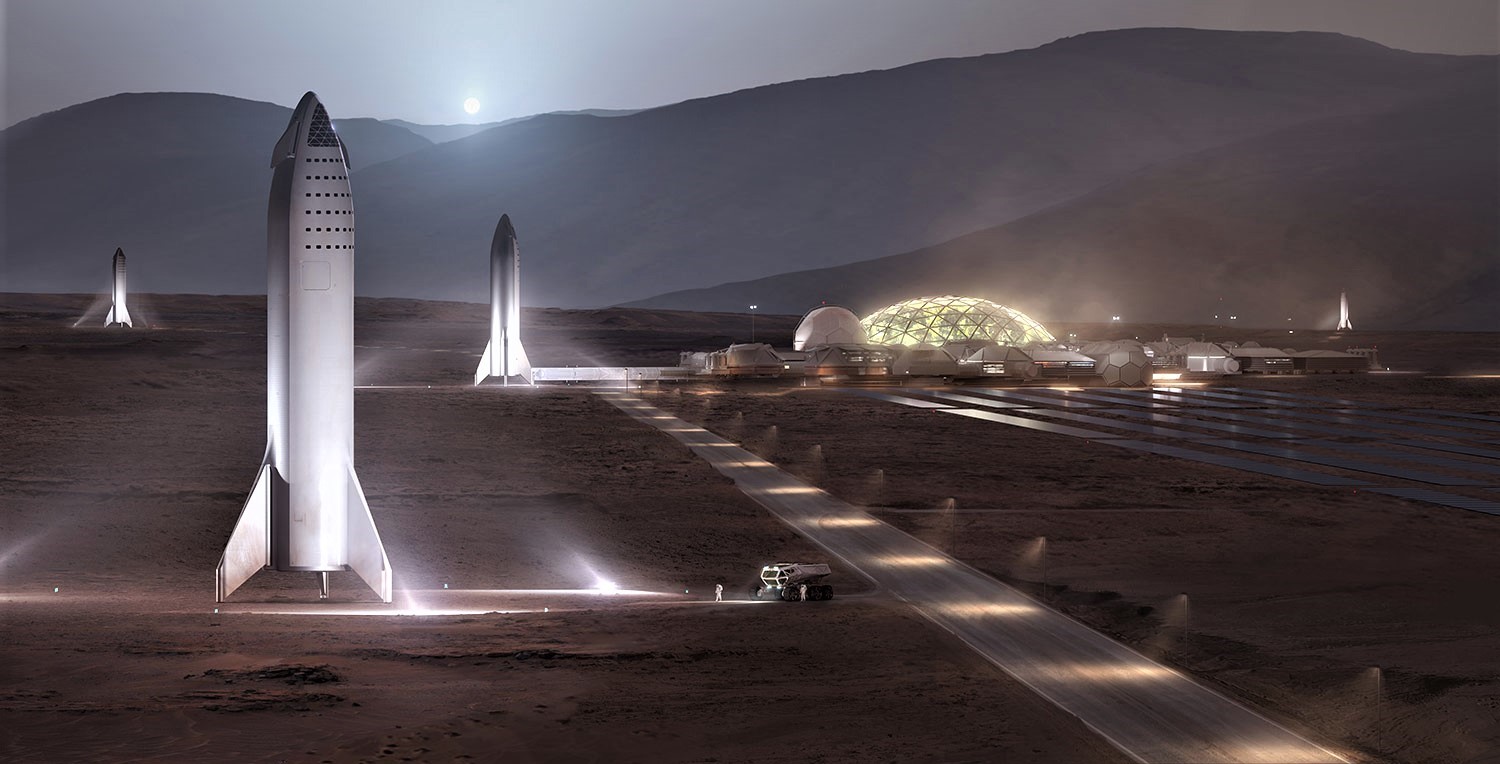
Back to BFR
While thoroughly entertaining, the most interesting aspect of this one-minute teaser was the approximate two seconds where Musk suggested that SpaceX had recently made several major breakthroughs in the context of BFR and Mars. What exactly those breakthroughs could be is entirely unclear, but the fact that Musk seemed positive about the recent developments and spoke of “breakthroughs” at all feels like an encouraging sign that the last two weeks of Musk’s chaotic announcements, updates, and abrupt cancellations are less indicative of program instability than they initially seemed to be.
Most notably, Musk appeared to announce and then completely cancel a sort of mini-spaceship that SpaceX was to base off of Falcon 9’s upper stage as a BFR spaceship technology demonstrator in less than two weeks. If realized, that mini-BFS would have reentered Earth’s atmosphere at orbital velocities to flight-test hypersonic fins and a new “ultra light” heat shield that will be (or would have been) critical for the overall success of BFS/Starship.
Contour remains approx same, but fundamental materials change to airframe, tanks & heatshield
— Elon Musk (@elonmusk) November 25, 2018
Ironically, in the middle of writing this article, Musk tweeted specifically about “fundamental” changes to the spaceship, leaving little more than the general appearance and propulsion systems unchanged. In essence, the design of BFS/Starship is now almost unrecognizable when compared with past iterations, at least from a perspective of the ship’s most critical systems.If Starship will not be built out of composites, then it’s possible that the multiple years SpaceX engineers and technicians have spent trying to develop large carbon composite propellant tanks (2016-present) and the time, energy, and capital put into those efforts will be almost entirely for naught if BFR pivots away from composite tanks.
- A tall platform was moved inside the tent around November 10th, likely to support the integration of the tank dome and barrel section. (Pauline Acalin)
- The dome was spied inside the tent on November 12. (Pauline Acalin)
- SpaceX’s BFR tent is filled with custom hardware that is predominately useful only for building large composite rocket parts. (Pauline Acalin)
- SpaceX’s huge Port of LA-based BFR tent, September 18th. (Pauline Acalin)
By all appearances, dozens of employees have spent the last year accepting delivery of $10-50M worth of custom-built composite tooling, setting it up, and building giant composite tank domes and segments. If composite tanks are no longer planned for the booster or spaceship, all that work may have been for nothing. Needless to say, we could certainly do for Musk’s proposed Reddit AMA – if not an entirely new BFR update event – to shed some light on the machinations behind these earthshaking programmatic changes.

News
Tesla Full Self-Driving v14.2 – Full Review, the Good and the Bad

Tesla rolled out Full Self-Driving version 14.2 yesterday to members of the Early Access Program (EAP). Expectations were high, and Tesla surely delivered.
With the rollout of Tesla FSD v14.2, there were major benchmarks for improvement from the v14.1 suite, which spanned across seven improvements. Our final experience with v14.1 was with v14.1.7, and to be honest, things were good, but it felt like there were a handful of regressions from previous iterations.
While there were improvements in brake stabbing and hesitation, we did experience a few small interventions related to navigation and just overall performance. It was nothing major; there were no critical takeovers that required any major publicity, as they were more or less subjective things that I was not particularly comfortable with. Other drivers might have been more relaxed.
With v14.2 hitting our cars yesterday, there were a handful of things we truly noticed in terms of improvement, most notably the lack of brake stabbing and hesitation, a major complaint with v14.1.x.
However, in a 62-minute drive that was fully recorded, there were a lot of positives, and only one true complaint, which was something we haven’t had issues with in the past.
The Good
Lack of Brake Stabbing and Hesitation
Perhaps the most notable and publicized issue with v14.1.x was the presence of brake stabbing and hesitation. Arriving at intersections was particularly nerve-racking on the previous version simply because of this. At four-way stops, the car would not be assertive enough to take its turn, especially when other vehicles at the same intersection would inch forward or start to move.
This was a major problem.
However, there were no instances of this yesterday on our lengthy drive. It was much more assertive when arriving at these types of scenarios, but was also more patient when FSD knew it was not the car’s turn to proceed.
Can report on v14.2 today there were ZERO instances of break stabbing or hesitation at intersections today
It was a significant improvement from v14.1.x
— TESLARATI (@Teslarati) November 21, 2025
This improvement was the most noticeable throughout the drive, along with fixes in overall smoothness.
Speed Profiles Seem to Be More Reasonable
There were a handful of FSD v14 users who felt as if the loss of a Max Speed setting was a negative. However, these complaints will, in our opinion, begin to subside, especially as things have seemed to be refined quite nicely with v14.2.
Freeway driving is where this is especially noticeable. If it’s traveling too slow, just switch to a faster profile. If it’s too fast, switch to a slower profile. However, the speeds seem to be much more defined with each Speed Profile, which is something that I really find to be a huge advantage. Previously, you could tell the difference in speeds, but not in driving styles. At times, Standard felt a lot like Hurry. Now, you can clearly tell the difference between the two.
It seems as if Tesla made a goal that drivers should be able to tell which Speed Profile is active if it was not shown on the screen. With v14.1.x, this was not necessarily something that could be done. With v14.2, if someone tested me on which Speed Profile was being used, I’m fairly certain I could pick each one.
Better Overall Operation
I felt, at times, especially with v14.1.7, there were some jerky movements. Nothing that was super alarming, but there were times when things just felt a little more finicky than others.
v14.2 feels much smoother overall, with really great decision-making, lane changes that feel second nature, and a great speed of travel. It was a very comfortable ride.
The Bad
Parking
It feels as if there was a slight regression in parking quality, as both times v14.2 pulled into parking spots, I would have felt compelled to adjust manually if I were staying at my destinations. For the sake of testing, at my first destination, I arrived, allowed the car to park, and then left. At the tail-end of testing, I walked inside the store that FSD v14.2 drove me to, so I had to adjust the parking manually.
This was pretty disappointing. Apart from parking at Superchargers, which is always flawless, parking performance is something that needs some attention. The release notes for v14.2. state that parking spot selection and parking quality will improve with future versions.
Any issues with parking on your end? 14.1.7 didn’t have this trouble with parking pic.twitter.com/JPLRO2obUj
— TESLARATI (@Teslarati) November 21, 2025
However, this was truly my only complaint about v14.2.
You can check out our full 62-minute ride-along below:
Elon Musk
SpaceX issues statement on Starship V3 Booster 18 anomaly
The incident unfolded during gas-system pressure testing at the company’s Massey facility in Starbase, Texas.

SpaceX has issued an initial statement about Starship Booster 18’s anomaly early Friday. The incident unfolded during gas-system pressure testing at the company’s Massey facility in Starbase, Texas.
SpaceX’s initial comment
As per SpaceX in a post on its official account on social media platform X, Booster 18 was undergoing gas system pressure tests when the anomaly happened. Despite the nature of the incident, the company emphasized that no propellant was loaded, no engines were installed, and personnel were kept at a safe distance from the booster, resulting in zero injuries.
“Booster 18 suffered an anomaly during gas system pressure testing that we were conducting in advance of structural proof testing. No propellant was on the vehicle, and engines were not yet installed. The teams need time to investigate before we are confident of the cause. No one was injured as we maintain a safe distance for personnel during this type of testing. The site remains clear and we are working plans to safely reenter the site,” SpaceX wrote in its post on X.
Incident and aftermath
Livestream footage from LabPadre showed Booster 18’s lower half crumpling around the liquid oxygen tank area at approximately 4:04 a.m. CT. Subsequent images posted by on-site observers revealed extensive deformation across the booster’s lower structure. Needless to say, spaceflight observers have noted that Booster 18 would likely be a complete loss due to its anomaly.
Booster 18 had rolled out only a day earlier and was one of the first vehicles in the Starship V3 program. The V3 series incorporates structural reinforcements and reliability upgrades intended to prepare Starship for rapid-reuse testing and eventual tower-catch operations. Elon Musk has been optimistic about Starship V3, previously noting on X that the spacecraft might be able to complete initial missions to Mars.
Investor's Corner
Tesla analyst maintains $500 PT, says FSD drives better than humans now
The team also met with Tesla leaders for more than an hour to discuss autonomy, chip development, and upcoming deployment plans.

Tesla (NASDAQ:TSLA) received fresh support from Piper Sandler this week after analysts toured the Fremont Factory and tested the company’s latest Full Self-Driving software. The firm reaffirmed its $500 price target, stating that FSD V14 delivered a notably smooth robotaxi demonstration and may already perform at levels comparable to, if not better than, average human drivers.
The team also met with Tesla leaders for more than an hour to discuss autonomy, chip development, and upcoming deployment plans.
Analysts highlight autonomy progress
During more than 75 minutes of focused discussions, analysts reportedly focused on FSD v14’s updates. Piper Sandler’s team pointed to meaningful strides in perception, object handling, and overall ride smoothness during the robotaxi demo.
The visit also included discussions on updates to Tesla’s in-house chip initiatives, its Optimus program, and the growth of the company’s battery storage business. Analysts noted that Tesla continues refining cost structures and capital expenditure expectations, which are key elements in future margin recovery, as noted in a Yahoo Finance report.
Analyst Alexander Potter noted that “we think FSD is a truly impressive product that is (probably) already better at driving than the average American.” This conclusion was strengthened by what he described as a “flawless robotaxi ride to the hotel.”
Street targets diverge on TSLA
While Piper Sandler stands by its $500 target, it is not the highest estimate on the Street. Wedbush, for one, has a $600 per share price target for TSLA stock.
Other institutions have also weighed in on TSLA stock as of late. HSBC reiterated a Reduce rating with a $131 target, citing a gap between earnings fundamentals and the company’s market value. By contrast, TD Cowen maintained a Buy rating and a $509 target, pointing to strong autonomous driving demonstrations in Austin and the pace of software-driven improvements.
Stifel analysts also lifted their price target for Tesla to $508 per share over the company’s ongoing robotaxi and FSD programs.
